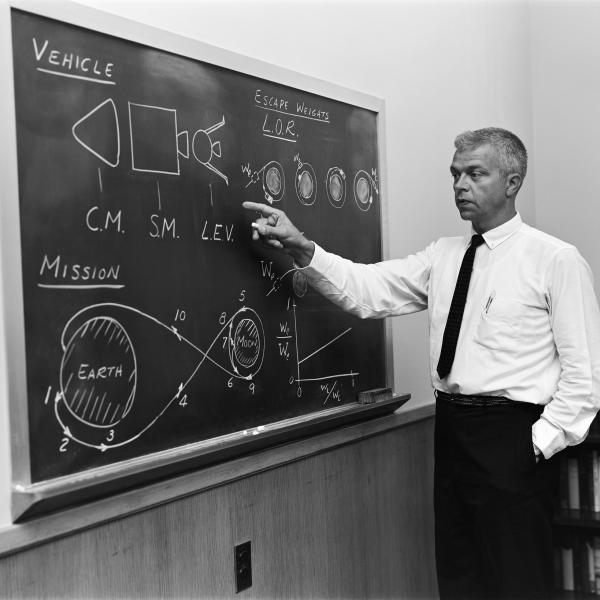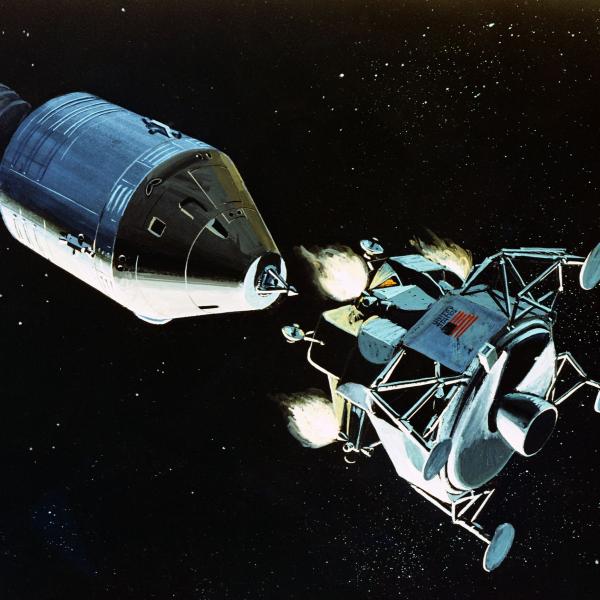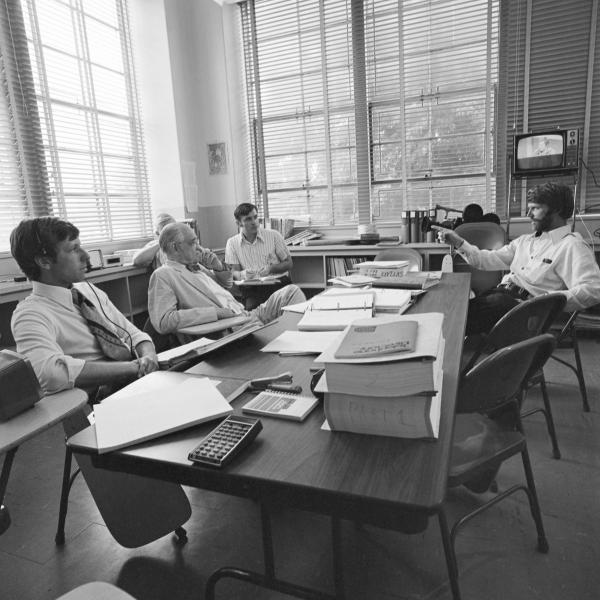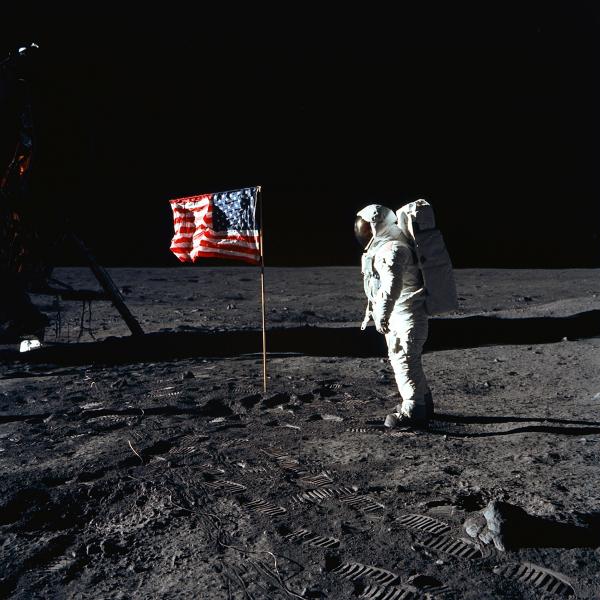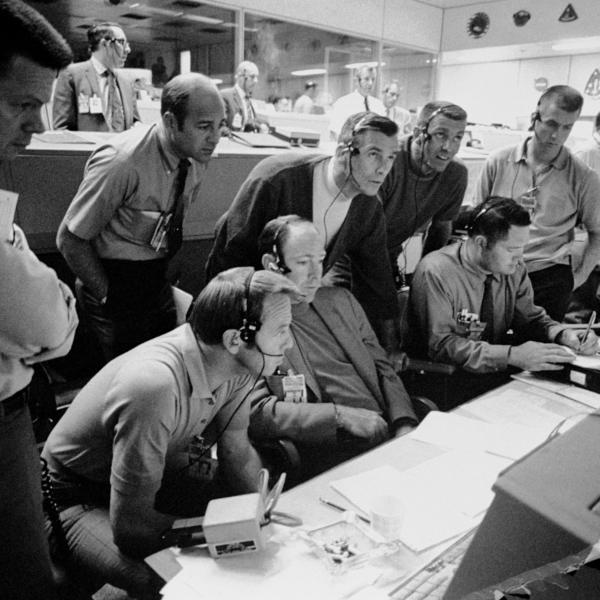
John C. Houbolt
Without Dr. John C. Houbolt, it is possible NASA would not have met President Kennedy’s challenge to land the first man on the moon before the end of the 1960s. Houbolt aggressively promoted the use of the lunar orbit rendezvous (LOR) concept for the Apollo moon missions and almost single handedly convinced NASA to adopt this form of mission.
Before making the pivotal contribution, Houbolt had a varied career in aeronautics and aerospace engineering. He earned both a bachelor’s and master’s degree in civil engineering from the University of Illinois, in 1940 and 1942 respectively. Also in 1942, he joined the National Advisory Committee for Aeronautics (NACA) Langley Memorial Aeronautics Laboratory (LMAL) as an assistant civil engineer in the Structures Research Division. He served in the Army Air Corps form 1944-1946. While employed by NACA he traveled to the Swiss Federal Institute of Technology to study aeroelasticity and aerothermodynamics and earned a PhD there in technical sciences in 1957. Back at Langley he became Assistant Chief of the Dynamics Load Division and was subsequently promoted to Associate Chief and Chief of the Theoretical Mechanics Division in 1960 and 1962. From 1954-1963 Houbolt also taught classes in aeronautics, spaceflight, and mathematics at the University of Virginia and Virginia Polytechnic Institute.
Houbolt risked his career in his persistent advocacy of the LOR concept. He firmly believed LOR was the only feasible method for a succesful moon landing. Facing opposition at both Langley Research Center and NASA, Houbolt broke protocol and sent a letter directly to Robert Seamans, Associate Administrator for NASA. LOR was officially selected by NASA in 1962, thanks to Houbolt’s tenacity.
Houbolt had a long and distinguished career. He received numerous awards including the NASA Exceptional Scientific Achievement Medal and is credited with ensuring the success of the Apollo missions.
